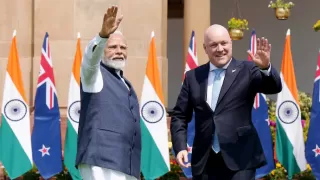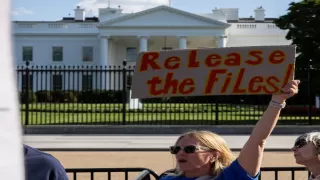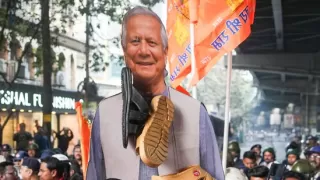Pakistan’s latest constitutional amendment has triggered an intense national debate, reshaping the military command structure in ways the country has not seen in decades. What was introduced as a measure to strengthen coordination among the armed forces is now raising questions about the future of civilian oversight, inter-service equilibrium, and the strategic calculus shaping Pakistan’s defence posture.
The sweeping changes have fuelled concerns that the army’s influence—already dominant in Pakistan’s political and security landscape—may expand even further. Critics warn that the realignment risks weakening the institutional autonomy of the navy and air force, potentially deepening structural imbalances within the tri-services. Supporters, however, argue that these reforms are necessary to modernise the national security architecture.
At the heart of the debate is a single issue: whether the amendment represents progress or an unprecedented consolidation of power. As Pakistan navigates its evolving security environment, the implications will reverberate far beyond the barracks and courtroom, potentially shaping regional dynamics for years to come.
Reshaping the Military Command Structure
The amendment introduces a series of structural revisions that directly alter the command hierarchy. Central to these changes is the creation of the Chief of Defence Forces (CDF), a position automatically held by the Chief of Army Staff. This configuration grants unified command oversight over the army, navy, and air force, raising concerns that the historically dominant army may further entrench its authority.
Supporters argue that unified command simplifies coordination and improves rapid decision-making during crises. They claim that outdated models originating in the 1970s no longer meet the demands of modern multi-domain warfare. Critics contend that merging authority in this manner sidelines the navy and air force, potentially diminishing their operational autonomy.
The decision to abolish the Chairman Joint Chiefs of Staff Committee position also carries long-term implications. Although once symbolic, the role provided institutional representation and offered a platform to balance perspectives between services. Removing it eliminates a key avenue through which the PAF and PN influenced strategic planning.
Concerns Over Civilian Oversight and Military Autonomy
Another critical aspect of the amendment is the establishment of lifelong immunity for five-star officers. This provision ensures that top military leaders, once elevated to the rank, retain privileges and protections for life. While supporters frame this as a recognition of service, critics see it as a structural shield that reduces accountability.
Observers argue that civilian governments, already struggling to exert influence over military institutions, may find it even harder to check senior figures under the new framework. With the removal of the CJCSC role and the consolidation of top military posts, the ability of civilian leadership to review key security decisions becomes an even greater challenge.
Many fear that granting legal and constitutional cover to these changes weakens democratic checks and balances. The concern is not about administrative restructuring alone but about whether these enhanced protections could make civilian institutions more vulnerable.
Impact on the Navy and Air Force
The Pakistan Navy and Pakistan Air Force are widely perceived as the most affected by the amendment. By placing the CDF—who is concurrently the army chief—at the apex of the command structure, the air force and navy risk losing influence in strategic planning, promotions, and resource allocation.
Retired military officials warn that this shifting balance may foster institutional resentment. They argue that each service has distinct operational needs, and centralising authority could compromise performance and morale. Historically, the CJCSC position offered at least a symbolic mechanism for balance; its removal tilts the structure heavily toward the army.
Despite assurances that the navy and air force will retain autonomy within their operational spheres, critics point to the amendment's vague terms of reference as a potential source of conflict. Without clear guidelines, overlapping roles may hinder collaborative harmony rather than promote it.
Five-Star Rank and Expanding Authority
One of the most controversial elements is the transformation of five-star ranks from ceremonial honors into constitutionally empowered offices. These positions now carry lifetime immunity from prosecution and perpetual service privileges, raising deep legal and institutional questions.
The amendment extends tenure timelines by resetting the service clock for those elevated to CDF. This change ensures longer terms for the highest-ranking officer and reinforces continuity of command, but it simultaneously limits movement within the military hierarchy for years.
Analysts argue that granting near-permanent authority to a single individual reshapes the military’s internal power distribution. While intended to stabilise leadership, the move risks entrenching influence in a way that undermines merit-based progression.
Integration of Nuclear Command Under Army Leadership
The amendment further centralises control of Pakistan’s nuclear programme within the army’s leadership. The newly defined strategic command position overseeing nuclear assets is restricted exclusively to army officers. This codifies what analysts describe as a long-standing reality but now formalises it constitutionally.
Supporters insist this is essential for national security, arguing that nuclear oversight must remain tightly coordinated and insulated from political turbulence. However, critics point out that consolidating control without transparency may increase risks rather than reduce them.
The restructuring of nuclear command adds another layer to concerns about institutional imbalance. With the nuclear enterprise now aligned exclusively with the army’s strategic command, the services’ input on critical national security matters may decline.
Institutional Imbalance and Strategic Implications
Many experts warn that the cumulative changes—centralised command, extended tenures, five-star immunity, and strategic concentration—threaten to disrupt the delicate balance among Pakistan’s services. Instead of fostering unity, the amendment could inadvertently heighten inter-service competition.
The risks extend beyond internal tensions. A military structure overly tilted toward one branch may weaken the responsiveness and adaptability of the overall defence apparatus. Historical experience suggests that institutional cohesion is crucial during crises, and reforms must account for long-term stability.
Opponents caution that by empowering a single branch to an unprecedented degree, the amendment risks undermining the very synergy it aims to enhance. Without equitable distribution of authority, the military as a whole could face operational inefficiencies.
Political and Regional Repercussions
Domestically, the amendment has sparked political controversy. Parties opposing the legislation claim it represents a retreat from democratic governance and strengthens unelected power centers. Allegations of political deals and pressures have only intensified the debate.
The changes arrive at a sensitive time in Pakistan’s political landscape, where public trust in institutions is fragile. Political leaders fear that further consolidation of military authority could complicate governance, undermine civilian legitimacy, and deepen polarisation.
Regionally, analysts are watching closely. Pakistan’s defence posture plays a central role in South Asian security dynamics, and shifts in its internal military structure may influence perceptions among neighboring countries. The centralisation of nuclear command, in particular, carries implications for strategic stability in the region.
The Uncertain Road Ahead
As Pakistan implements these sweeping reforms, the long-term consequences remain uncertain. Whether the amendment will bring improved coordination or solidify imbalances depends greatly on implementation, clarity of roles, and institutional willingness to adapt. The country now stands at a crossroads where constitutional restructuring intersects with military tradition, political necessity, and regional security.
What is clear is that the amendment represents a turning point. It not only recalibrates command authority but also signals the beginning of a new era in Pakistan’s civil-military relations. How this shift plays out will shape the trajectory of governance, national security, and institutional balance for years to come.
Also Read: Congress Wins Jubilee Hills Bypoll in Big Political Upset



















